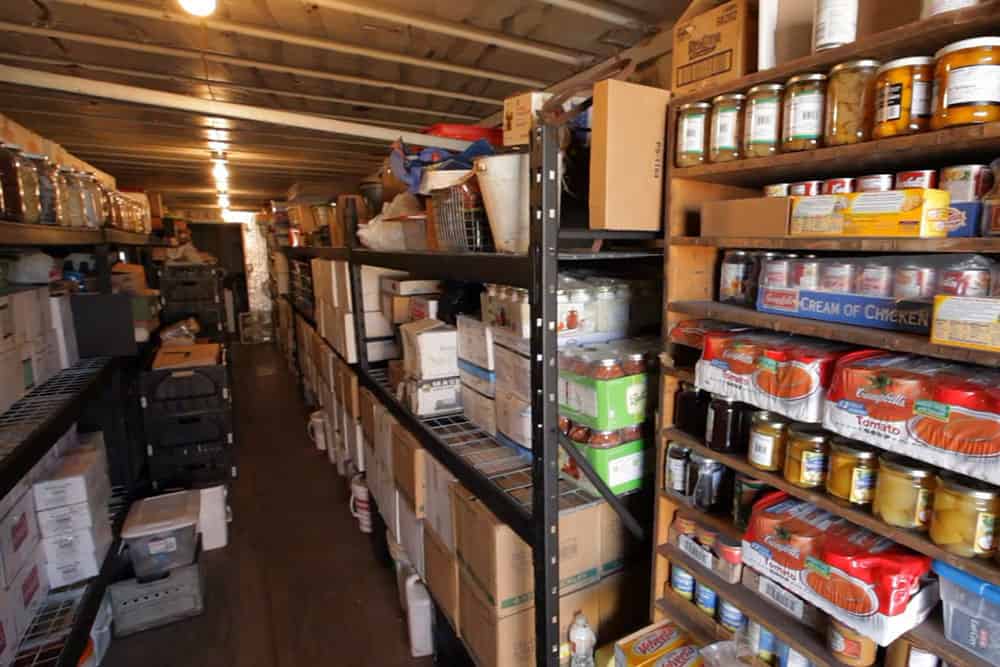Mastering your backpacking checklist can feel like a daunting task.
You’ve read the blogs, listened to seasoned hikers, and yet you’re still unsure if you’ve packed everything necessary for your outdoor adventure. Don’t fret; we’re here to help you get your backpacking checklist right.
Your backpacking checklist is more than just a list of items—it’s the difference between an enjoyable trek and a potentially dangerous situation. It is imperative to have the correct items on your backpacking list.
The trick isn’t just knowing what goes into that perfect backpacking checklist but understanding how each item contributes towards making your trip safer, easier, and more memorable. Let us dive in!
Essential Gear for Backpacking Checklist: Your Key to a Successful Adventure
A successful backpacking trip is as much about the journey as it is about meticulous preparation. And at the heart of that prep work lies a comprehensive backpacking gear checklist, covering everything from shelter and storage to navigation equipment and personal toiletries.
“The right gear can turn an ordinary hike into an extraordinary adventure.”
Picking The Perfect Tent: More Than Just Shelter
Your tent isn’t just your sleeping quarters; it’s essentially your home on the trail. Therefore, choosing one involves careful consideration of factors such as weight, size, weather resistance, and ease of setup.
The best tents are lightweight yet spacious enough not to compromise comfort or durability. Additionally, they’re built tough – ready to withstand whatever Mother Nature throws their way.
Hydration On-The-Go: Quench Your Thirst Efficiently
No hiking endeavor should ever underestimate hydration needs. It’s crucial to always have a water bottle filled before setting off each morning – dehydration doesn’t make for good company in nature.
Hydration packs & bladders come highly recommended if you find carrying multiple bottles burdensome or will be trekking through areas with limited refill points.
Sleep Systems & Other Essentials: Because Comfort Matters Too.
- A warm sleeping bag shields against cold ground while also providing insulation.
- To add more comfort, consider including a comfortable sleeping pad too.
- Trekking poles offer stability during challenging terrains.
- Maintaining hygiene is equally important, hence don’t forget hand sanitizer.
And hey, we can’t overlook other key stuff like planning your meals.
Mastering the Art of Planning and Preparation for a Backpacking Trip
So, you’re eager to embark on an exciting backpacking adventure? A crucial part of this journey is mastering how to plan for a backpacking trip. Let’s break down what that involves.
“Crafting a comprehensive packing list, understanding trail conditions, and obtaining necessary permits form the trifecta of effective planning.”
In essence, successful preparation comes down to being thorough with your gear checklist, staying informed about the state of trails, and ensuring legal compliance through proper permitting.
The Significance of Your Backpack Packing List
Your backpack isn’t just storage—it’s your lifeline out in the wilderness. So naturally, creating an exhaustive packing list forms step one in our guide.
- Packing essentials like shelter equipment (think tents), sleeping bags, and food supplies top the list.
- You’ll also need cooking gear along with clothing suitable for the forecasted weather during your travel period. Don’t forget navigation tools.
- In addition to the essentials, a first aid kit is an essential item for any hike in case of emergencies.
Navigating Trail Conditions Like A Pro
Beyond knowing what goes into your pack, understanding current trail conditions should be at the forefront when prepping for any hike. Rangers can give you insights into potential hazards or restrictions, such as closed trails due to wildlife activity or adverse weather patterns. Online platforms are also great resources offering real-time updates on various routes’ status—don’t overlook them.
Tackling Itineraries & Permits: Two Sides Of The Same Coin
Embarking on a backpacking adventure requires meticulous planning and preparation. Crafting an exhaustive packing list, understanding trail conditions, and securing necessary permits are essential steps in the process. Remember, your backpack is more than just storage – it’s your lifeline in the wilderness. Stay informed about potential hazards or restrictions by consulting rangers or online resources before you hit the trails.
Lightweight Backpacking: The Game Changer
Ultralight backpacking techniques can transform your outdoor experiences, making the trek comfortable without compromising on essentials.
A lighter pack allows you to move faster and farther, reducing physical strain. But how do you achieve this? Let’s explore some strategies.
Multipurpose Gear: A Must-Have
Selective packing is crucial for lightweight backpacking. You need gear that offers multiple utilities while being light and compact.
For instance, a spork, which serves as both a spoon and fork, is a smart choice over carrying separate utensils. Instead of lugging around extras “just in case,” focus on what’s absolutely necessary based on research or past experience.
Gear Weight: Less Is More
To truly master ultralight backpacking tips, consider investing in lighter alternatives to traditional equipment like tents or sleeping bags. OutdoorGearLab has excellent reviews on such camping gear, which could help guide your decisions. Check out their best ultralight tent recommendations.
An interesting statistic – the average base weight of a lightweight pack ranges between 10-20 pounds. Keeping within this range ensures comfort during long treks without sacrificing safety or preparedness.
Fuel Your Trek Smartly
Your food choices also significantly impact the total weight carried. Opt for high-calorie yet lightweight meals like freeze-dried foods or energy bars instead of heavy canned goods.
- Sourcing Water Along The Trail:
This technique can save considerable weight; however, remember to carry reliable water purification methods before relying solely on trail-sourced water. This strategy reduces load but still keeps hydration levels optimal – an essential aspect of any successful hike.
Backpacker’s Guide to Safety Measures and First Aid Essentials
Navigating the wilderness can be intimidating, yet with the right understanding and supplies it is quite doable. Here are some vital tips every backpacker should be aware of.
Packing a Lifesaving First Aid Kit
So how do you prepare for injuries when you’re miles away from civilization? How do you ensure minor cuts don’t turn into major problems?
The first step is to assemble a well-stocked first aid kit or if you don’t have the time, you can buy a pre stocked first aid kit. This easy-to-follow system includes band-aids of various sizes, antibiotic ointment, gauze pads, and other items that will help handle any wounds over and over again.
A reliable first aid kit isn’t just an option – it’s essential. With this tool by your side, your hiking adventures become safer and more confident.
Navigating Bear Country Safely
Bear encounters can be intimidating. Very much so. But they needn’t cause panic if handled correctly.
- Bear Spray: When exploring areas known for bear activity, bear spray becomes your best friend. It acts as a deterrent during confrontations, giving you time to retreat safely.
- Noise: Make noise while hiking; bears usually avoid humans if they hear them coming.
- Campsite safety: Secure food properly at campsites; enticing smells may attract unwanted guests.
Remember: Being prepared makes all the difference when facing potential hazards on your outdoor adventures.
Navigational Tools For Backpackers: The Essentials
Navigation is a fundamental part of hiking. But what tools do you really need? Let’s delve into the essentials that every backpacker should have.
The Relevance of Topo Maps and Waterproof Map Bags/Ziplocs
“Topographical maps, also known as topo maps, are invaluable for understanding terrain details like elevation changes and water bodies.”
To keep these critical resources safe from weather conditions or accidental spills, waterproof map bags or Ziploc bags come in handy. They ensure your topo maps stay dry yet easily accessible when needed. source
Compasses: Reliable Navigational Aid
In contrast to electronic devices requiring power sources or signal coverage, compasses operate independently under almost all circumstances.
GPS Devices & Phone Apps With Downloaded Maps: Modern Alternatives
The integration of modern technology doesn’t replace traditional methods; instead, it enhances them. GPS devices provide real-time location data which can confirm if you’re on the right trail.
Don’t fancy carrying more stuff? Then, check out GPS apps like Gaia GPS or AllTrails Pro that let you download maps. They’re light, space-saving and dependable as long as your battery lasts. Find out more about Gaia here.
Maintaining Personal Hygiene During Hiking Trips
Embracing nature’s beauty with a hike shouldn’t mean that you have to sacrifice your personal hygiene. In fact, it’s essential for your comfort and health.
From sunscreen and lip balm to bug repellent, these items should be at the top of every hiker’s checklist. They protect against harsh weather conditions and keep pesky insects at bay.
The role of toilet paper or wipes in maintaining cleanliness can’t be overstated. But here’s where we need an eco-friendly twist: opt for biodegradable versions packed in sealable bags to ensure they stay dry while reducing environmental impact.
The Role of Digging Trowels and Menstrual Products
A digging trowel is another key item that aids hygiene during hikes by allowing proper disposal of human waste – a crucial part of outdoor etiquette.
For female hikers, menstrual products are non-negotiables too. Compact options like tampons or menstrual cups make them easy additions to any backpack without compromising space.
Caring For The Environment With Biodegradable Soap
But good hygiene isn’t just about taking care of ourselves; it extends beyond our bodies into caring for our environment as well. Using biodegradable soap instead of regular ones helps us do just that when cleaning up after meals at campsites or freshening up ourselves without causing harm to flora or fauna around us.
Remember – being clean goes hand-in-hand with being green when hiking.
FAQs in Relation to Backpacking Checklist
What is the 20% rule for backpacking?
The 20% rule suggests that your backpack should not weigh more than 20% of your body weight to ensure a comfortable and safe hiking experience.
What do I really need for backpacking?
You’ll need essential gear like a tent, sleeping bag, food and water supplies, navigation tools, first aid kit, and personal hygiene items for a successful backpacking trip.
How much food do I need for a 3-day backpacking trip?
Aim to pack about one-and-a-half to two pounds of high-calorie foods per person each day. This can vary depending on individual needs and activity levels.
What are the big 3 items in backpacking?
The ‘big three’ in backpacking refers to your shelter (tent), sleep system (sleeping bag & pad), and pack. These tend to be the heaviest items carried on any trek.
Conclusion
Embark on your next outdoor adventure with our ultimate backpacking checklist. From essential gear to safety tips, we’ve got you covered!
Backpacking is a voyage of exploration and endurance, enabling one to gain insight into themselves.
Planning ahead, being prepared, and packing appropriately are all essential for a successful backpacking trip.
Your backpacking checklist isn’t just about gear but also safety measures, navigation tools, and personal hygiene essentials.
Remember to keep things light without compromising on necessities.
Navigational tools are vital while hiking so don’t forget those topo maps or GPS apps with pre-downloaded maps.
If you’re looking to delve deeper into emergency preparedness and outdoor survival skills, then BestSurvival has got you covered! Our comprehensive guides will ensure that your next backpacking trip is safe, memorable, and full of discovery. Get ready for the ultimate outdoor experience!


